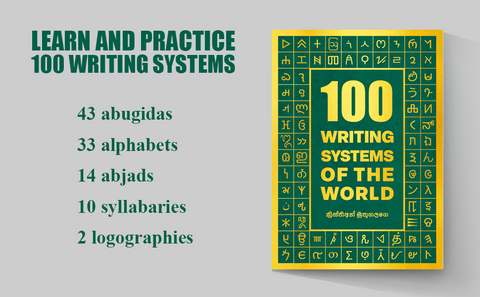Title: Unraveling the Mysteries of Tifinagh Script: The Ancient Writing of the Berbers

Introduction: In the heart of North Africa lies a fascinating script with a rich history and cultural significance: Tifinagh. This unique script is intricately linked to the Berber people, an indigenous group of North Africa known for their diverse languages and cultures.
1. Script type: Tifinagh is an alphabet script used for writing Amazigh (Berber) languages. It represents both consonants and vowels, making it distinct from an abjad.
2. Writing direction: Traditionally, Tifinagh is written from right to left, following the writing direction of many ancient scripts. However, in modern times, some variations of Tifinagh are written from left to right.
3. Creator and invention time: The origins of the Tifinagh script are shrouded in mystery and subject to ongoing research and debate. Some scholars believe that the script was created around 3000 BCE, while others argue for a later invention during the Berber Empire era.
4. Time period of use: The Tifinagh script has a long and complex history, with evidence of its use dating back thousands of years. It was used extensively by various Berber tribes and civilizations, including the Numidians, the Garamantes, and the Tuareg. Over time, Tifinagh went through periods of decline and resurgence.
5. Population and current usage: Today, the Tifinagh script is primarily used by the Berber communities in North Africa. The Berbers are the indigenous people of Algeria, Morocco, Tunisia, Libya, and parts of Mali, Niger, and Mauritania. While it experienced a decline during periods of Arabization, there has been a revival of the script in recent decades, thanks to efforts to preserve and promote Berber culture.
6. Languages associated: Tifinagh is primarily associated with Berber languages, which form a distinct language family within the Afroasiatic language group. Some well-known Berber languages written in Tifinagh include Tamazight, Tashelhit, Kabyle, and Tuareg.
Interesting Facts and Cultural Significance:
-
Ancient Origins: The Tifinagh script's roots can be traced back to rock art and inscriptions found in the Sahara desert, dating back thousands of years.
-
UNESCO Recognition: In 2003, UNESCO recognized the Tifinagh script as a masterpiece of the oral and intangible heritage of humanity, highlighting its cultural significance and historical importance.
-
Revival and Standardization: In recent years, there have been efforts to standardize the Tifinagh script, leading to its inclusion in computer fonts and Unicode character sets.
-
Amazigh Flag: The Amazigh (Berber) flag, adopted in the early 21st century, features the letter "Yaz" in Tifinagh script, symbolizing the quest for freedom and identity.
Conclusion: The Tifinagh script stands as a testament to the resilience and cultural identity of the Berber people. With its ancient origins and symbolic representation of Berber languages and traditions, Tifinagh continues to be an important part of North African heritage. As efforts to preserve and promote the Berber culture gain momentum, the Tifinagh script's legacy is likely to thrive, connecting future generations with their past and preserving the diversity and beauty of the Berber languages.

Practice Tifinagh and other scripts with our book "100 Writing Systems of the World"!
Discover 100 diverse writing systems from around the globe in one captivating book. Practice writing different scripts with full character charts and essential information provided. Let your imagination soar on the blank right pages as you explore 43 abugidas, 33 alphabets, 14 abjads, 10 syllabaries, and 2 logographic scripts. Dive into numeral systems and even design your own writing system. Immerse yourself in the beauty and diversity of global scripts today with "100 Writing Systems of the World." Unleash your creativity and order now!